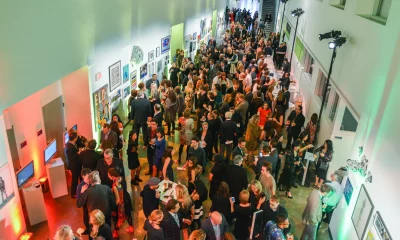Arts & Entertainment
‘Fight the Power’
From ‘Homocats’ to gender-bending video installations, region’s galleries not offering same old thing
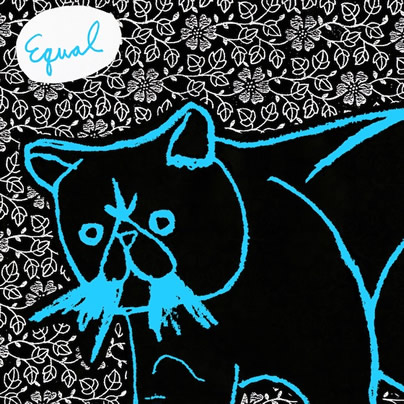
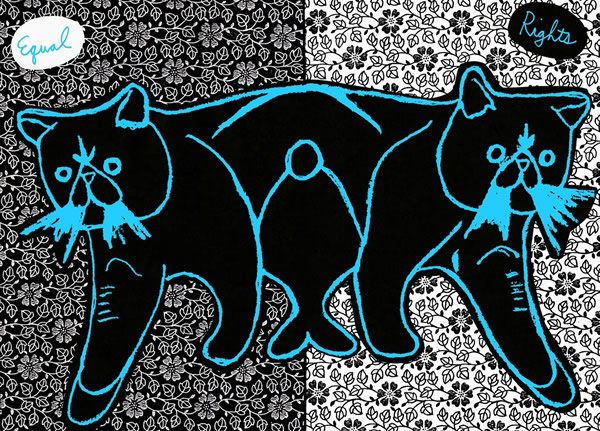
‘HOMOCATS’ (Courtesy Transformer)
“Fade 2 Grey,” a solo exhibition by artist Adrian Loving featuring six video art installations that explore androgyny, gender roles, fashion and sensationalism of style in ‘80s pop music through artists such as Patti Smith, David Bowie, Grace Jones, Sylvester, Boy George, Prince and more, opens with a reception tonight from 6-9 p.m. and runs through April 25. It’s at Vivid Solutions Gallery inside the Anacostia Arts Center (1231 Good Hope Road, S.E.). Visit vividsolutionsgallery.com for full details.
Transformer (1404 P St., N.W.) is featuring “HOMOCATS: Fight the Power” by Brooklyn-based artist J. Morrison through March 15. Morrison, who is gay, combines the internet phenomenon of cats and socio-political LGBT issues on a psychedelic wallpaper design and printed c-prints. His work pays homage to historic queer symbols like the rainbow flag and pink triangle.
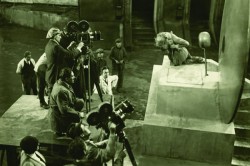
‘Behind Fourth Wall’ (Courtesy Royal Books)
AFI Silver Theatre and Cultural Center (8633 Colesville Rd., Silver Spring, Md.) and Royal Books presents “Behind the Fourth Wall: Actors and Directors on the Set, Photographs 1926-2001,” a behind-the-scenes movie exhibit. It opens today and runs through May 26. The exhibit is a collection of vintage behind-the-scenes of classic films from the silent era to the 20th century. The photos are candid and were taken by famous photographers such as Mario Tursi and Bob Willoughby, working professionals and anonymous photographers. For more details, visit afi.com/silver.
Kreeger Museum (2401 Foxhall Rd., N.W.) is currently featuring “K@20,” a celebration of the museum’s 20th anniversary, through July 31. The exhibit features 14 D.C.-area artists in a variety of mediums including installations, paintings, sculptures and paper to video. On April 16 from 6-7:30 p.m., a roundtable discussion will occur. For more information, visit kreegermuseum.com.
Touchstone Gallery (901 New York Ave., N.W.) presents “Light and Dark,” an exhibit that explores darkness and light in the spring equinox, through March 30. Touchstone member artists produced various forms of artwork such as ceramics, paintings, sculpture and drawing. For more details, visit touchstonegallery.com.
Corcoran Gallery (500 17th St., N.W.) features Rineke Dijkstra’s “The Krazyhouse, Liverpool UK, 2009” a four-channel video installation exhibit, March 29-June 15. Dikstra filmed guests at a popular dance club in Liverpool. It shows five young people (Megan, Simon, Nikky, Phillip and Dee) as they dance and sing to music they selected themselves. The half-hour show intends to look at each individual in a broader social spectrum.
Corcoran Gallery is also showing “Jennifer Steinkamp and Jimmy Johnson: Loop,” a visual art and music installation, March 15-April 20. Visitors are surrounded by digital colorful rope and can see their shadows on the walls. The combination makes for a multi-colored three dimension moving abstraction. Admission for the gallery is $10 for adults, $8 for seniors and students and free for children under 12. Visit corcoran.org for more details.
Gallery B (770 Wisconsin Ave., Bethesda, Md.) is showing “Ideal Form,” featuring paintings and drawings by artist Robert O’Brien, through March 29. O’Brien is a Maryland native and received his Certificate in Painting from Washington Studio School. His work has been shown in galleries throughout the area. For more details, visit bethesda.org.
Foundry Gallery (1314 18th St., N.W.) presents Ana Elisa Benavent’s “Shifting Gears” through March 30. Benavent uses color expressionism to demonstrate revival, healing, reinvention and change through a painting interpretation of riding in a car. Visit foundrygallery.org for more information.
The Phillips Collection (1600 21st St., N.W.) is showing “Intersections: 50-65 Horizon Line” by Jean Meisel, a D.C.-based artist, through May 4. The exhibit displays more than 50 watercolor paintings of horizon lines.
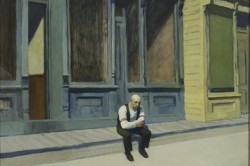
‘Edward Hopper’s Sunday’ (Courtesy Phillips Collection)
The Phillips Collection is also featuring “Made in the USA,” the most comprehensive on-site installation of the Phillip’s American collection to date, through Aug. 31. The exhibit includes prominent American artists of the late 19th century, as well as a display of Abstract Expressionists. Admission is $12 for adults, $10 for students and seniors and free for members and children under 12. Featured artists are Edward Hopper, Milton Avery, Man Ray and many more. Visit phillipscollection.org for details.
Artisphere (1101 Wilson Blvd., Arlington, Va.) presents “Coast to Coast” by Empty Stretch, an online photography curation group, April 2-Aug. 3 on the Town Hall Video Wall. Empty Stretch selected approximately 400 photographs that feature different coastlines and bodies of water. The photographs were collected through email submissions and Flickr. Visit artisphere.com for more details.
Hirshhorn (700 Independence Ave., S.W.) is featuring Santiago Sierra and Jorge Galindo in the Hirshhorn’s “Black Box” series with “Los Encargados (Those in Charge)” through May 18. Sierra staged a performance in 2012 with a motorcade of seven black Mercedes-Benz sedans with portraits of prominent Spanish leaders on top. By-standers filmed the spectacle on their phones and the footage can be seen in black and white.
The Smithsonian Craft Show is now in its 32nd year and scheduled for April 10-13 at the National Building Museum (401 F St., N.W.). It features 123 craft artists selected in a “quest for the best” and sale of limited edition and one-of-a-kind works available in 12 different media. Visit Smithsoniancraftshow.org for full details.
And though Gay Day isn’t until September, Hillwood Estate, Museum & Garden always has tons of great events, lectures and concerts on its slate. Visit hillwoodmuseum.org for full details.
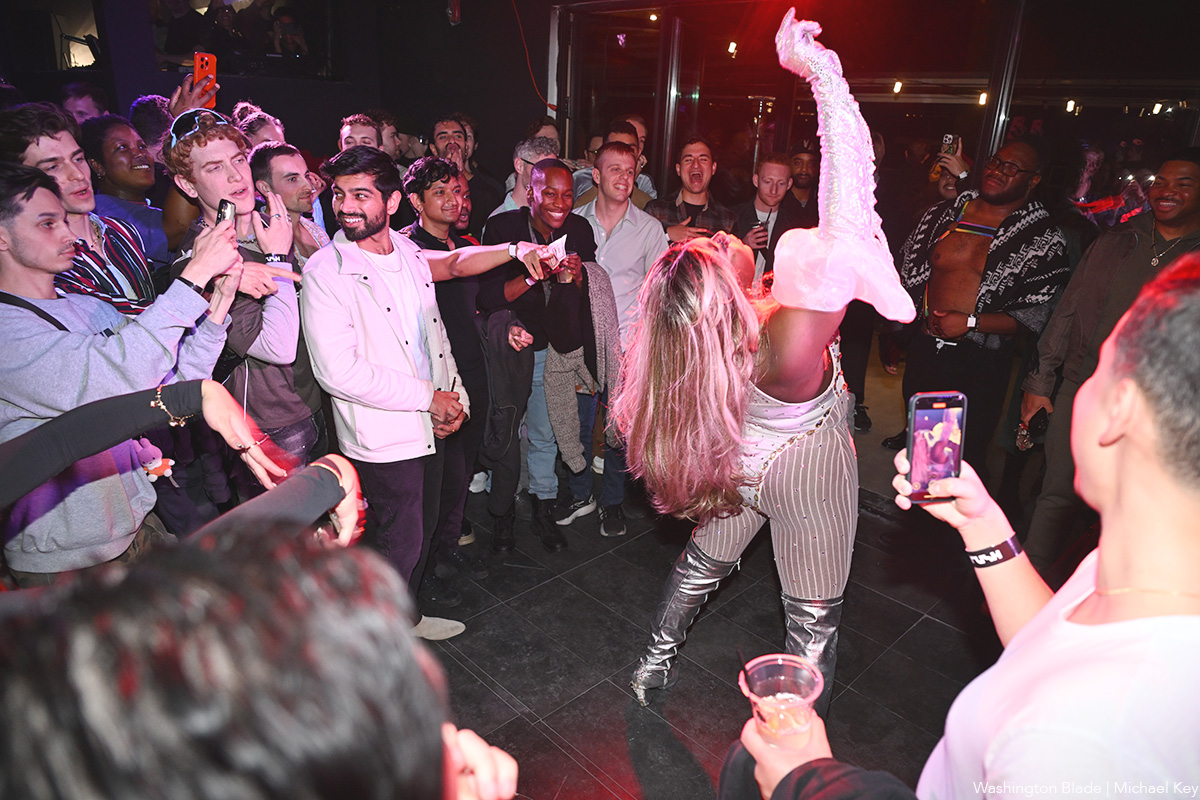
The new LGBTQ venue Rush (2001 14th Street, N.W.) held a preview night on Friday, Nov. 28. Performers included Cake Pop!, Druex Sidora and Tiara Missou.
(Washington Blade photos by Michael Key)
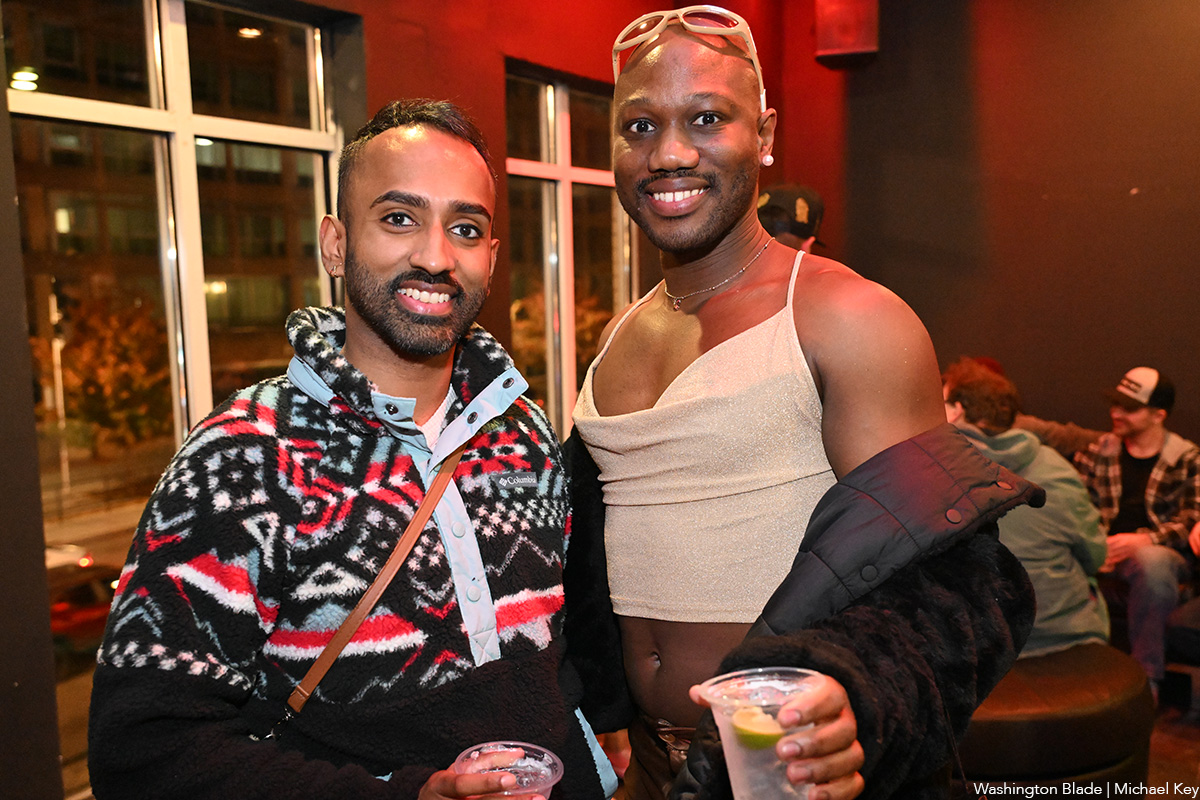
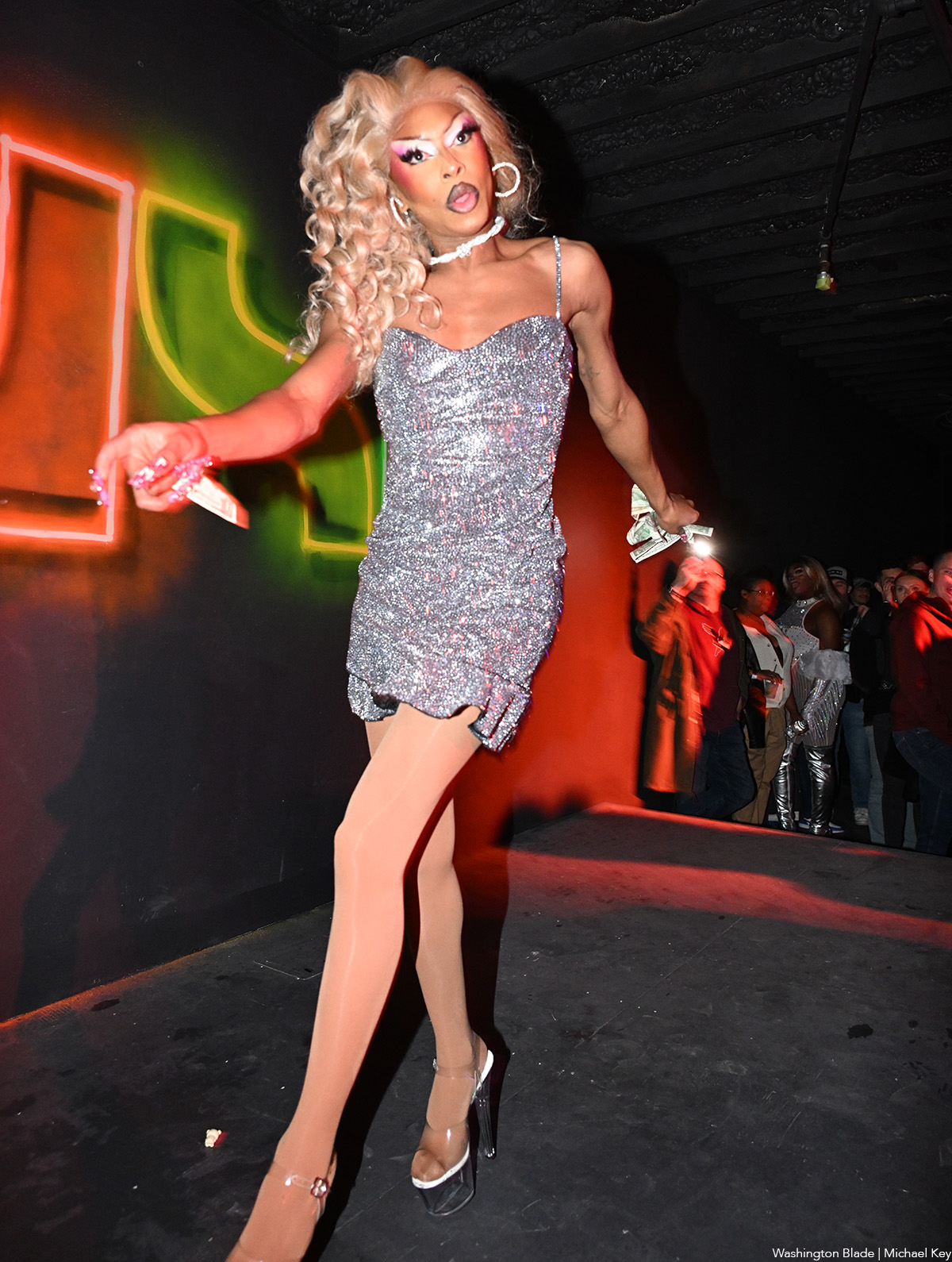
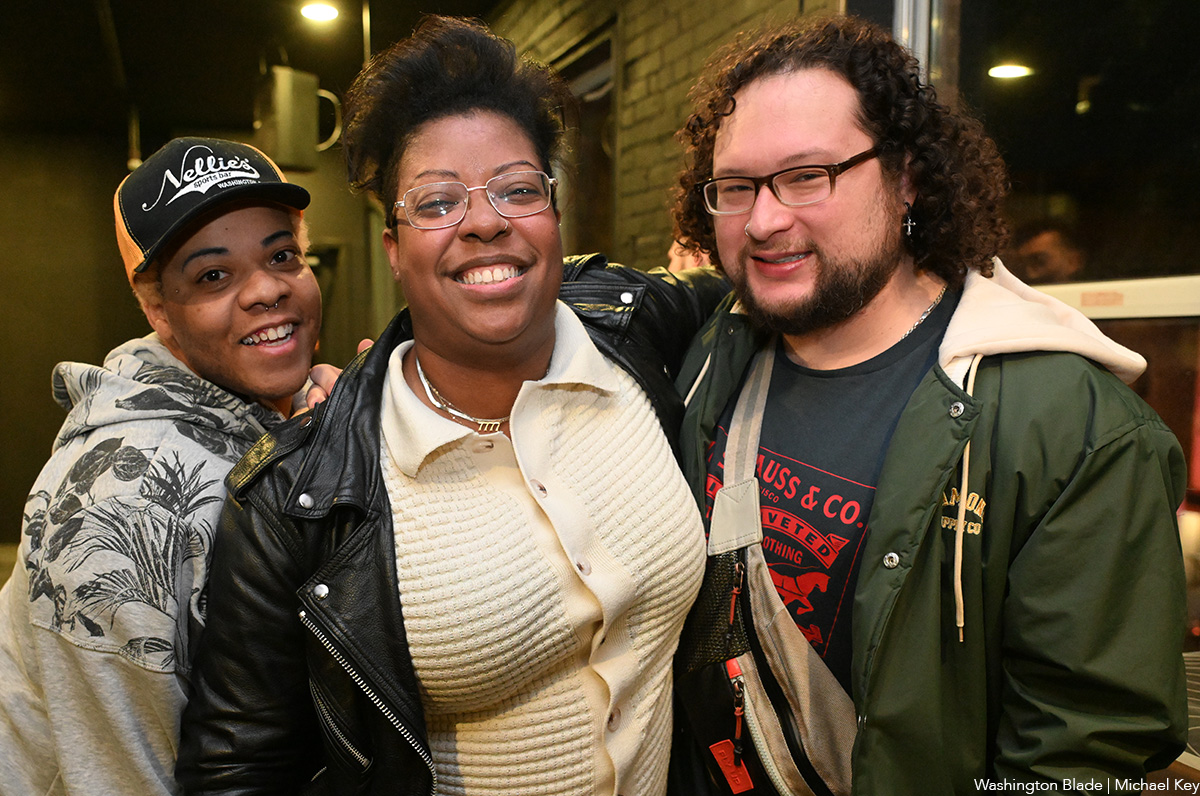
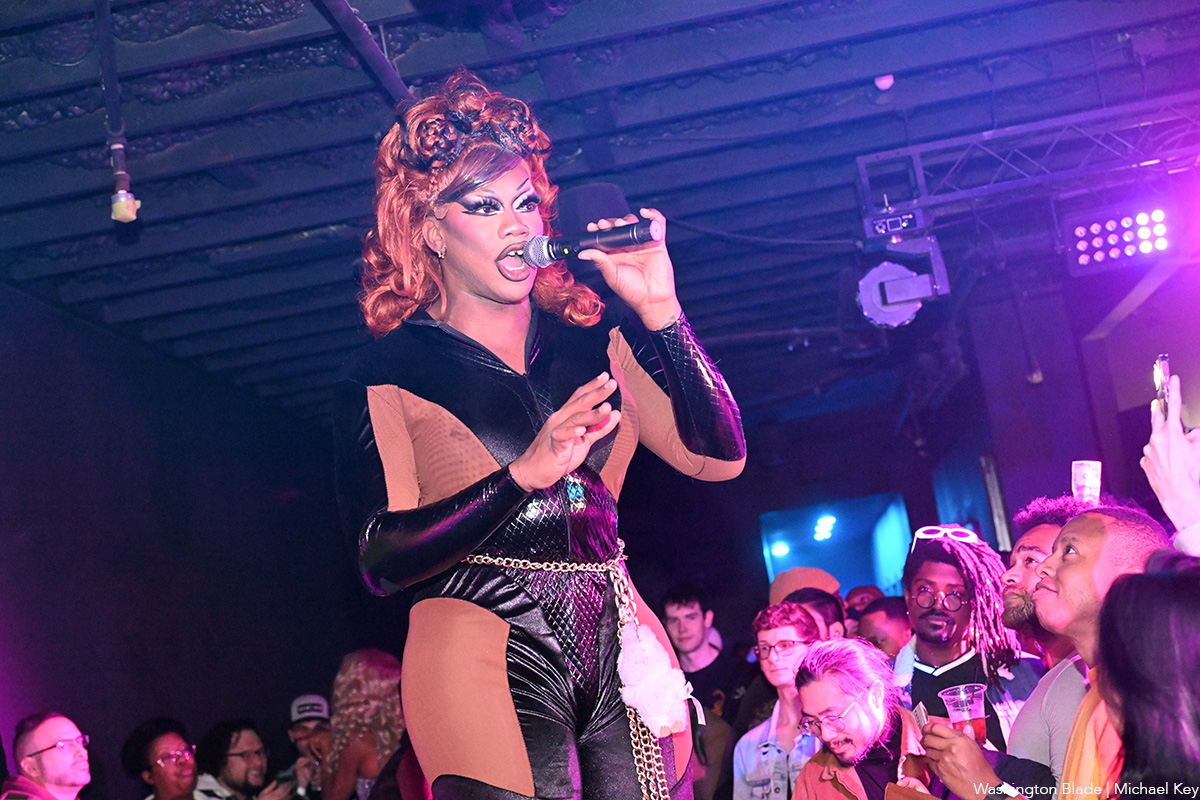
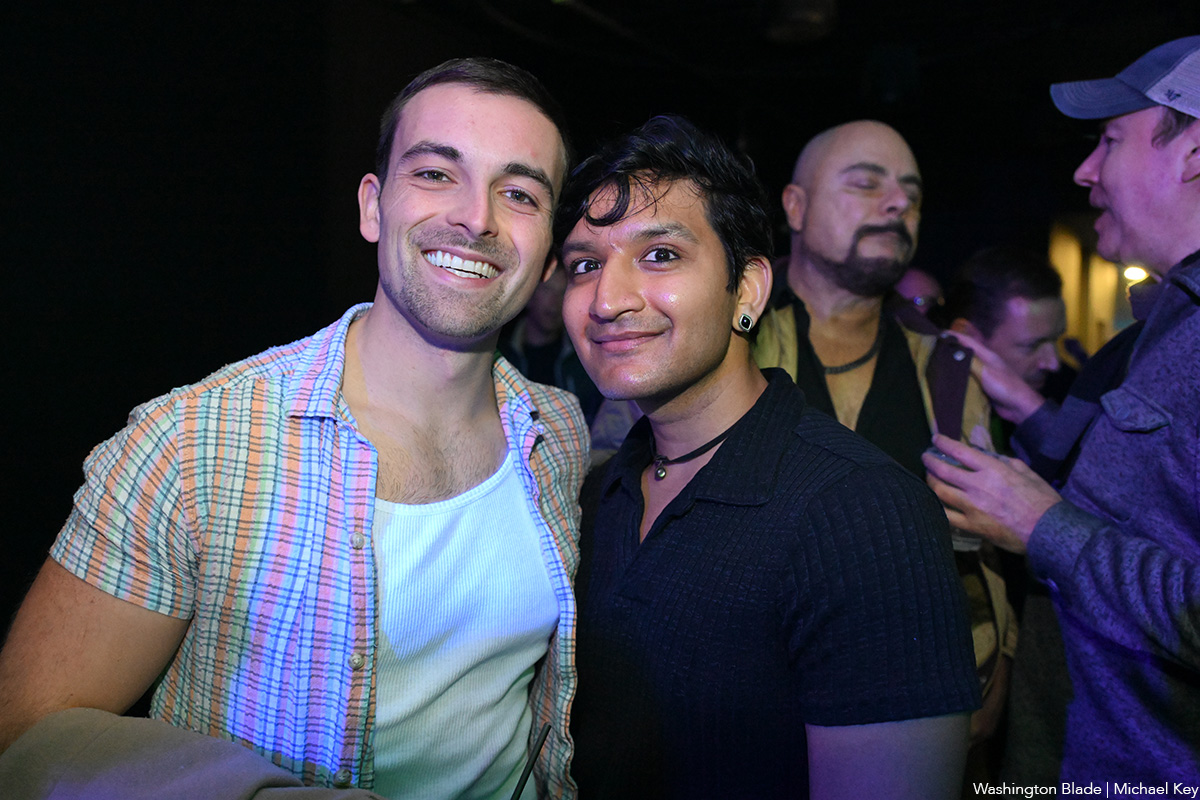
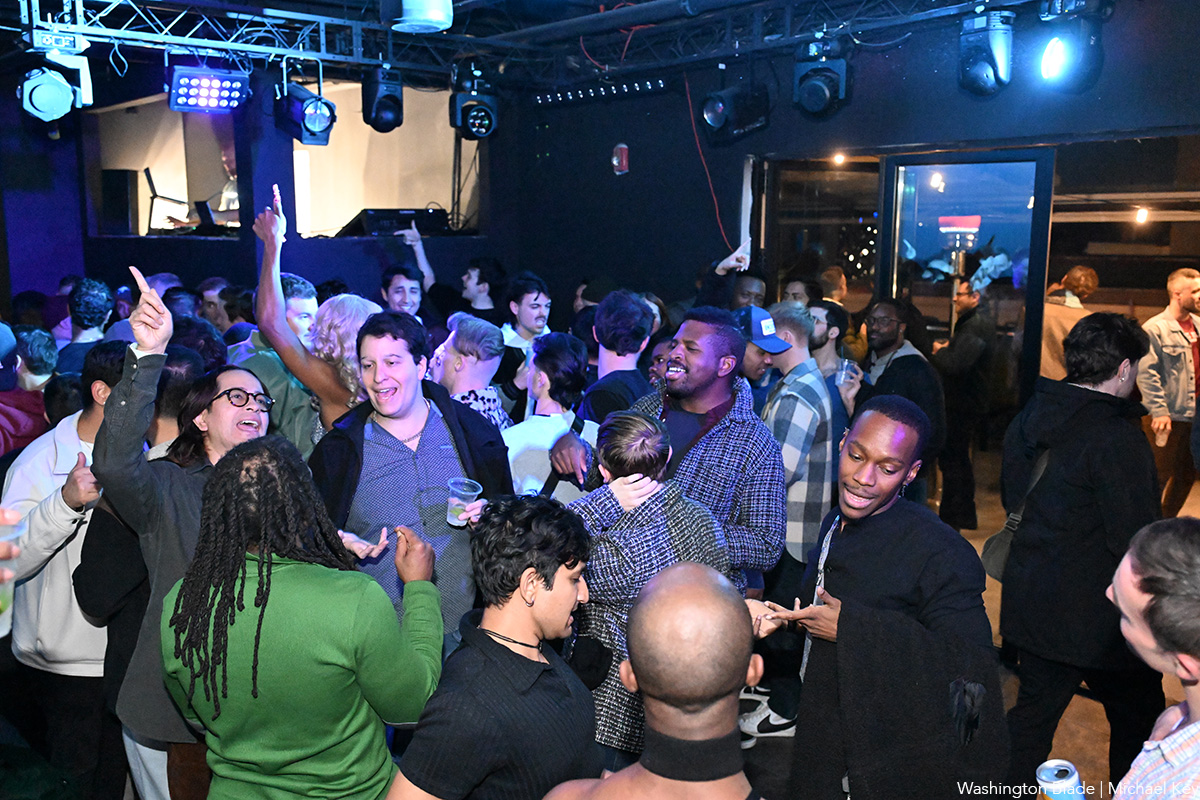
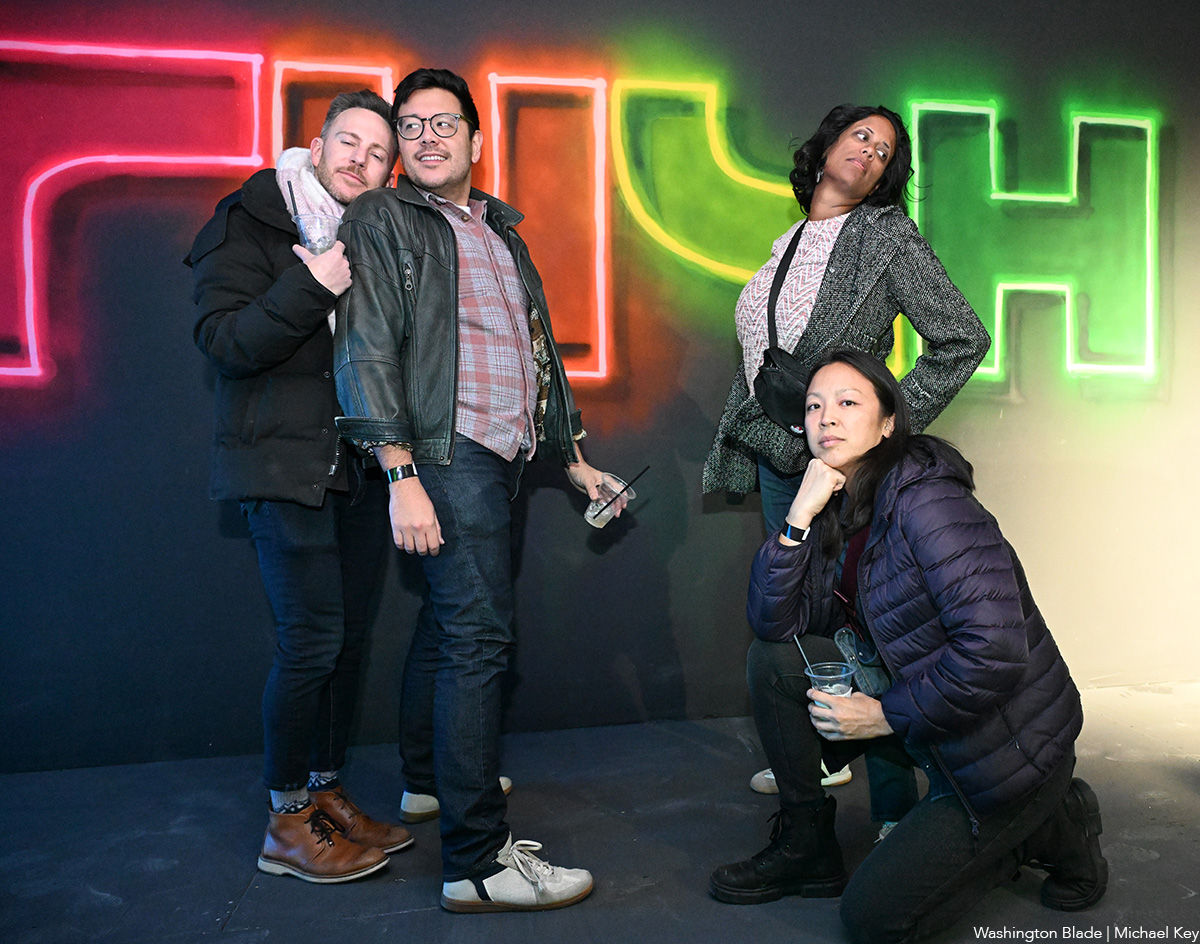
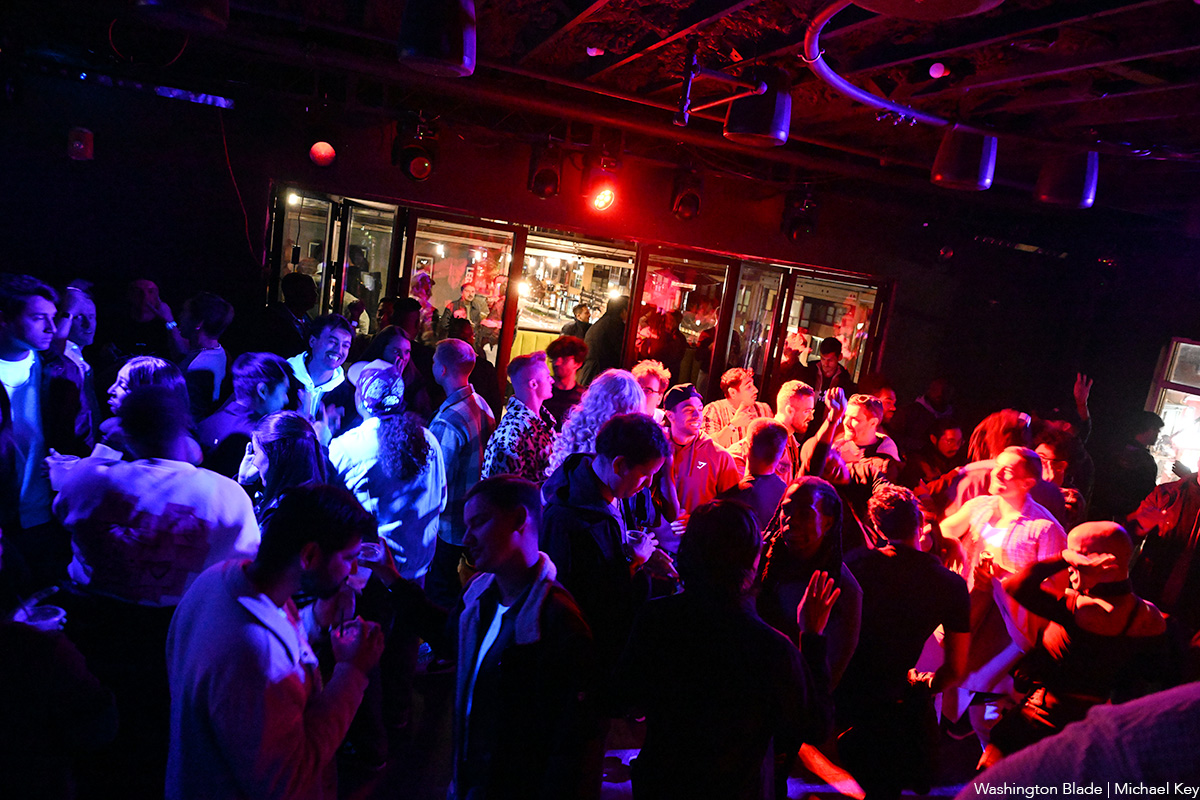
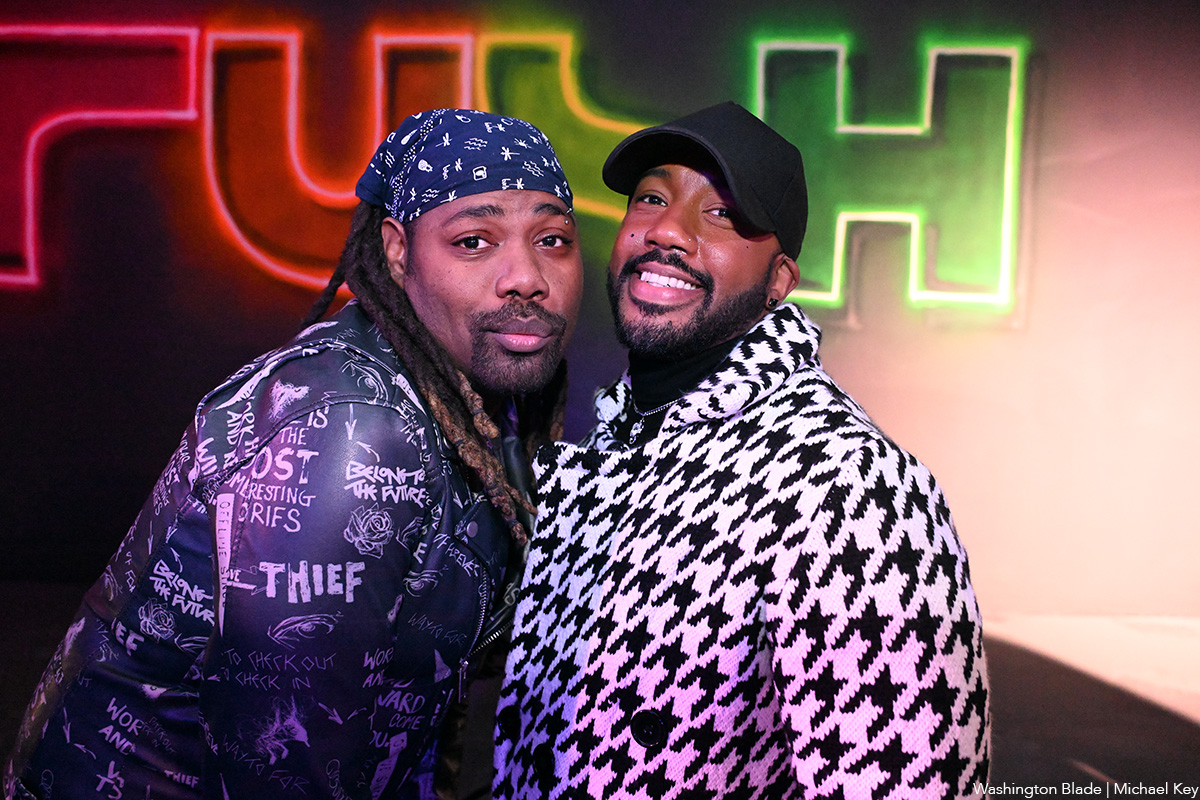
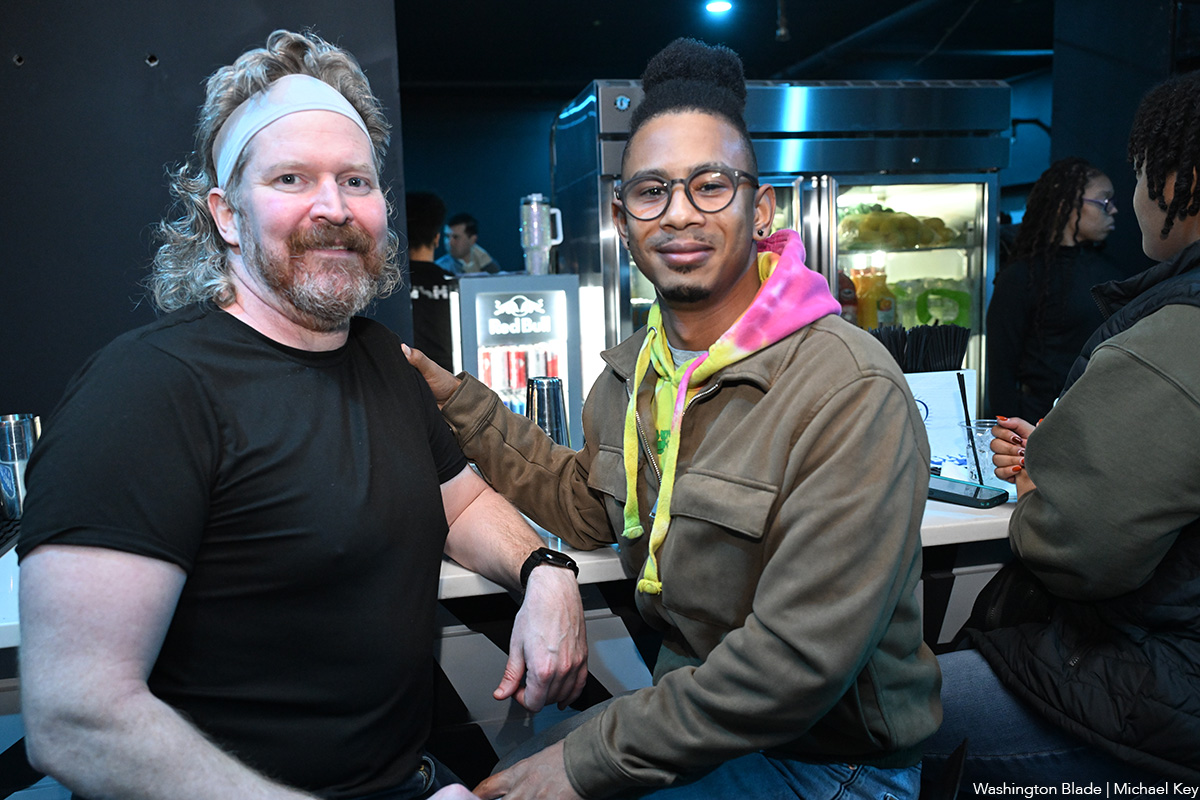
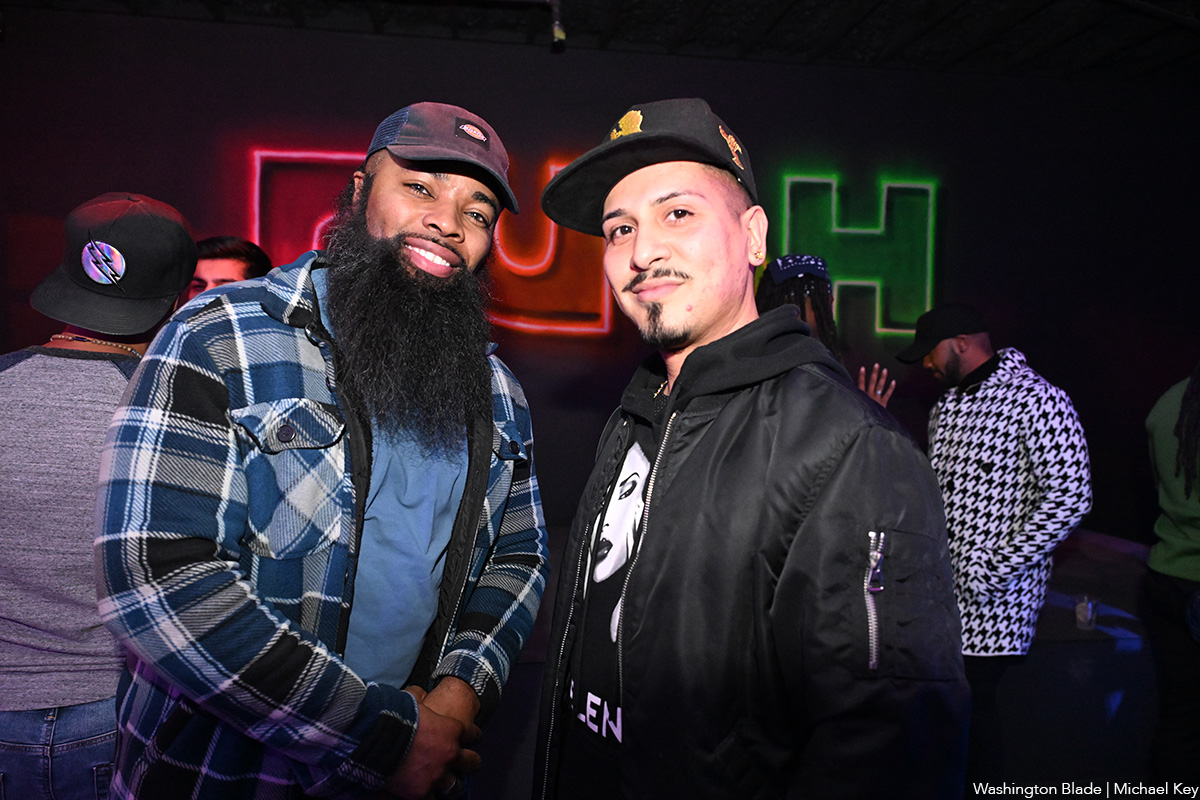
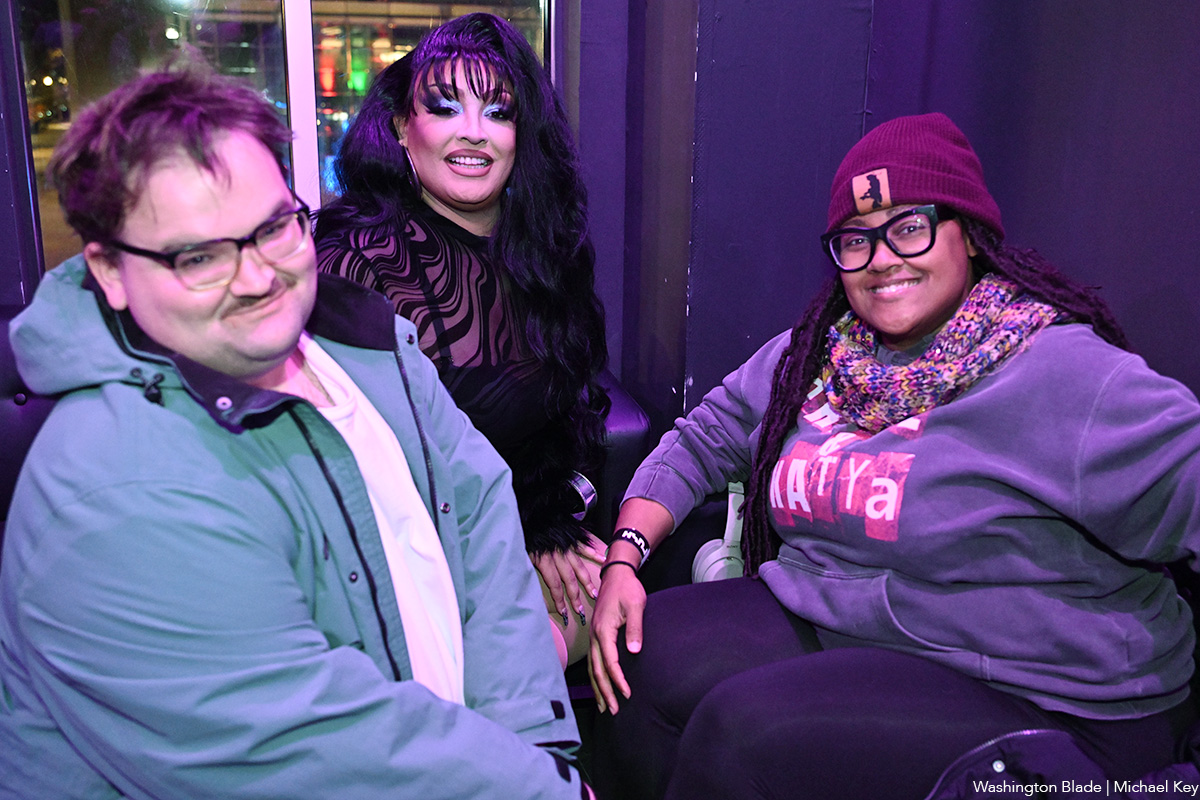
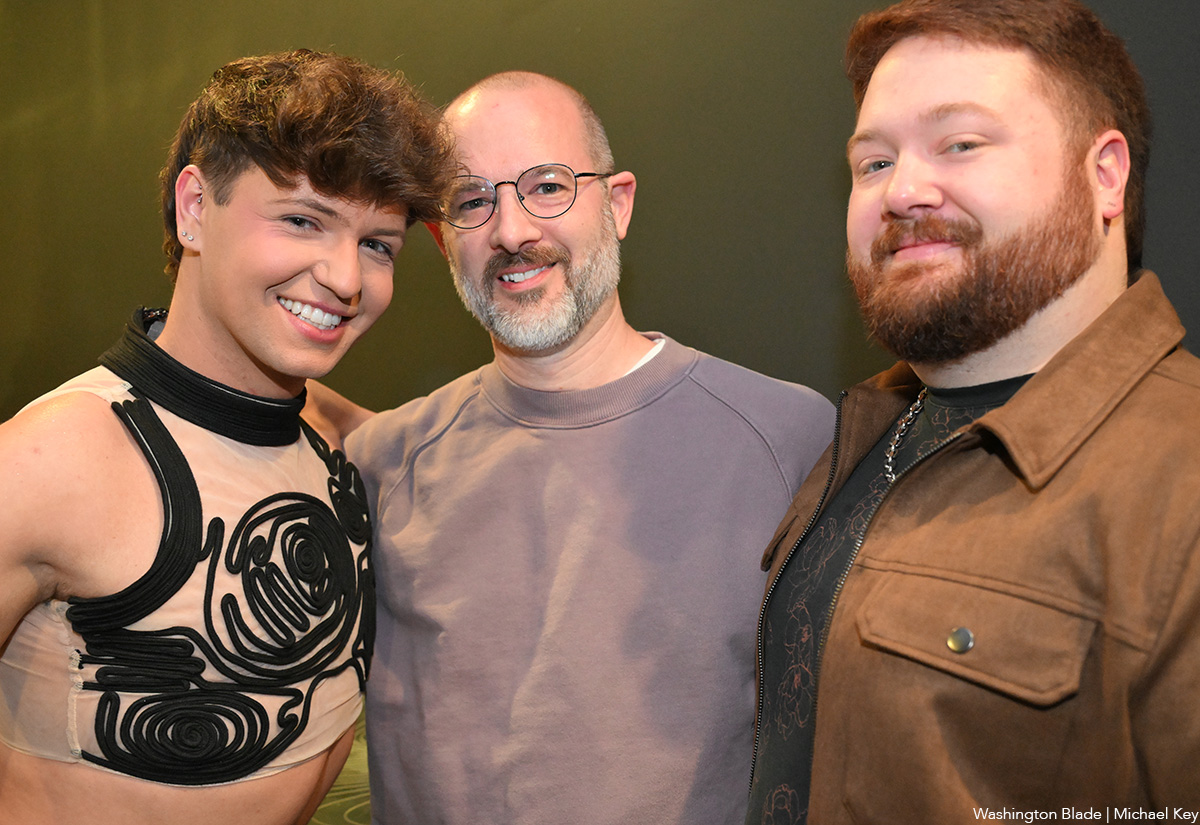
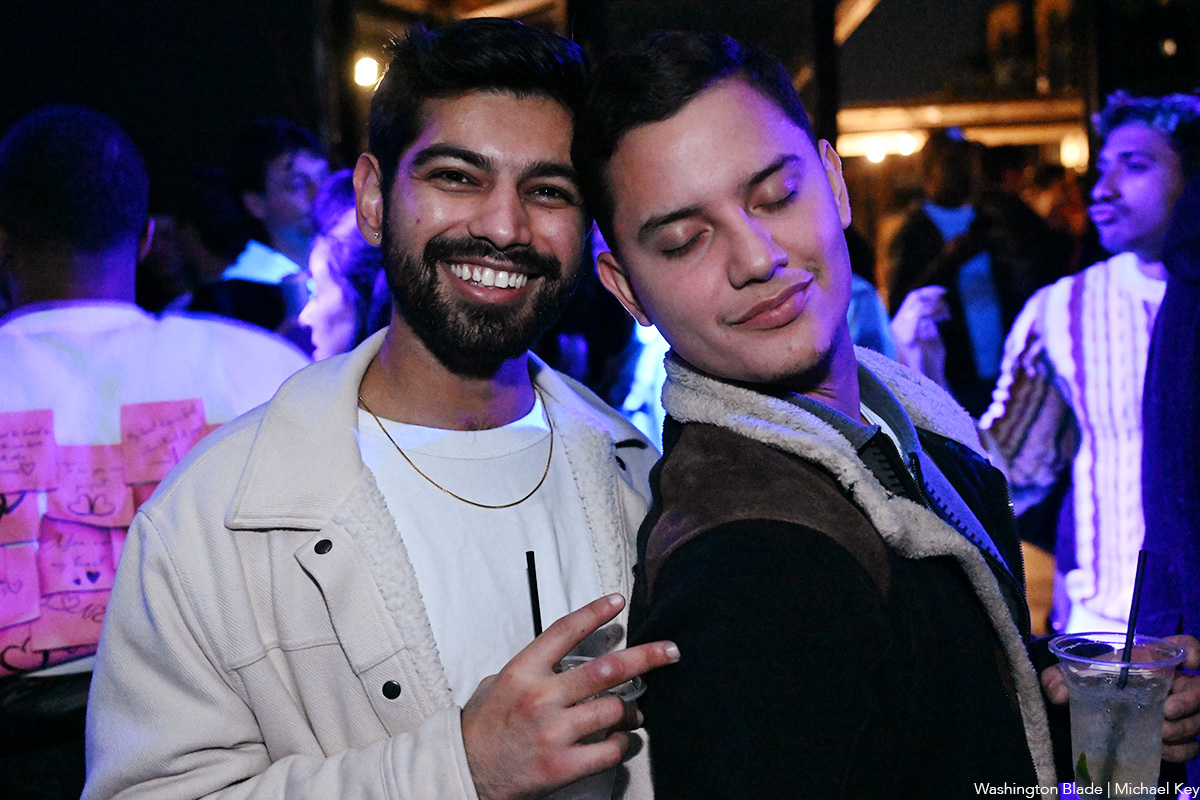
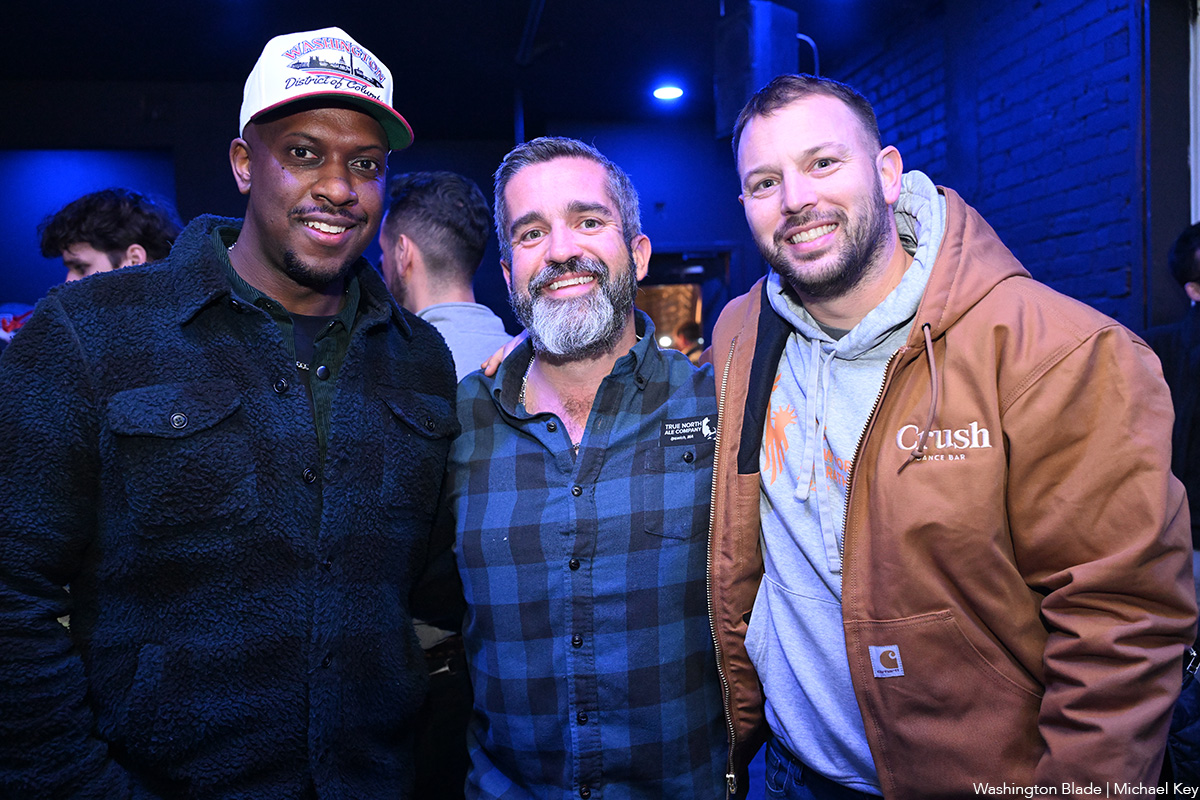
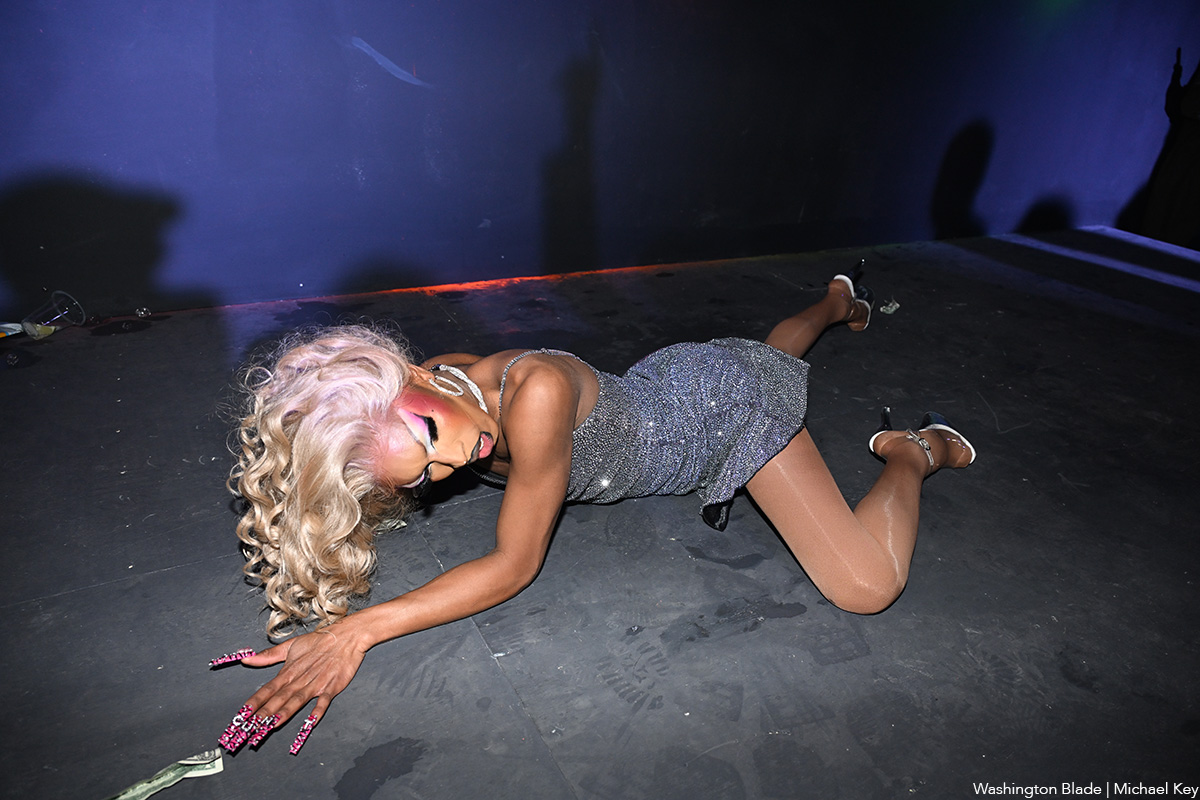
Movies
Holiday movie season off to a ‘Wicked’ good start
From Hallmark to horror, something for all tastes

With Christmas just around the corner, it’s time to look ahead to the movies headed our way for December – and just like last year, the perfect film to launch it all is already here.
We’re talking, of course, of “Wicked: For Good” (now in theaters), the follow-up to last year’s smash adaptation of the hit Broadway musical that turns the witchy mythos of “The Wizard of Oz” inside out. A continuation rather than a sequel, director John M. Chu’s sumptuously crafted epic adapts the show’s second act to conclude the saga of green-skinned Elpheba – branded as a “wicked” witch by the authoritarian Wizard (Jeff Goldblum) for her rebellion against his suppression of Oz’s animal population – and her complicated relationship with “frenemy” Glinda (Ariana Grande-Butera), who is now serving as a sort of “double agent” by working to change the regime from within. As with the movie’s source material, there’s a definite “second act slump,” which Chu and co-screenwriters Winnie Holzman and Dana Fox attempt to counter with some minor retooling of the plot, incorporating more material derived from the Gregory Maguire novel that inspired it all, and adding a couple of new, original songs; it works, to a large degree, but the second half still lacks the bubbling sense of joy and excitement that made the first such an infectious hit.
Still, that’s just a quibble – and while this one may not leave us as giddy, it’s a worthy completion of the project, arguably improving the show by granting it levels of emotional resonance, political subtext, and overall depth that always seemed to be the missing element to the material. As for the cast (which also includes first out gay “sexiest man alive” Jonathan Bailey, alongside Michelle Yeoh, Marissa Bode, Ethan Slater, and Bowen Yang), they all continue to deliver powerhouse performances, breathing the kind of fully developed life into their fantastical characters that makes them all stick with us after the final high note is sung. So never mind the inevitable letdown that comes with the splitting of the story into two parts – taken as a whole, Chu’s “Wicked” saga is still a cinematic triumph that, frankly, very few of us expected it to be, and that’s hardly a reason to be disappointed.
As for the rest of the holiday season, there’s not much in the way of directly LGBTQ content coming to our screens – but there are still plenty of promising titles for us to look forward to.
Cutting to the chase for fans of the “Queer Christmas Romance” genre, we’re happy to report that Hallmark – the reigning champion of such fare – has two queer holiday entries lined up for you this season. First up is “A Keller Christmas Vacation” (Hallmark+, now streaming), a quirky tale of three adult siblings on a holiday cruise with their parents in Europe, each dealing with their own personal issues as they find “unexpected joy, romance, and family bonds” along the way – and gay heartthrob Jonathan Bennett, who’s pretty much become the poster boy for this genre, stars as one of them, with former Superman Brandon Routh providing extra eye candy for good measure. The second is “The Christmas Baby” (Hallmark, 12/21), starring Ali Liebert and Katherine Barrell as a lesbian couple who get a holiday surprise when they find a baby on their doorstep; they decide to adopt – which, naturally, requires them to negotiate the process of balancing their relationship and careers with the challenge of being new moms.
There’s also “The Christmas Writer” (Tello, now streaming) in which a lesbian romance author (Shelby Allison Brown) returns to her hometown in search of some Christmas spirit after the death of her mother, an ugly breakup, and a bad case of writer’s block. What she finds is a single lesbian mom (Callie Bussell), and flying sparks ensue.
For heartwarming Christmas cheer without the romcom trappings, there’s “Oh. What. Fun.” (Prime Video 12/3), which serves up Michelle Pfeiffer as a mom and grandma whose knack for putting on the perfect holiday gathering is taken for granted by her self-absorbed family – until they leave her behind on a family outing, forcing them to pull it together themselves. Pfeiffer leads an ensemble cast that includes co-stars like Eva Longoria, Felicity Jones, Denis Leary, Danielle Brooks, Jason Schwartzman, Maude Apatow, Joan Chen, and Chloë Grace Moretz as the queer daughter whose vegan girlfriend throws a last-minute wrench into the dinner menu. Sounds relatable!
Not holiday-themed but still a gift, “Merrily We Roll Along” (limited theaters 12/5) is the multiple-Tony-winning 2023 Broadway revival of Stephen Sondheim’s musical that tells the story – in reverse – of three high school BFFs as their relationship (and their ideals) shift across three decades. Featuring some of Sondheim’s most personal compositions, director Maria Friedman’s production of the show (starring Jonathan Groff, Daniel Radcliffe, and Lindsey Mendez) was immersively captured on film before closing in 2024 – and now, it’s on its way to movie screens as a special holiday treat for musical theatre lovers.
Likewise unseasonable and just as intriguing is “100 Nights of Hero” (limited theaters 12/5), an adaptation of the graphic novel by Isabel Greenberg (itself based on the classic folk tale “1,001 Nights”) in which a woman (Maika Monroe) is left alone by her neglectful husband (Amir El-Masry) for 100 nights at the estate of his seductive friend (Nicholas Galitzine, “Red, White, and Royal Blue”) as a test of her fidelity, with only her loyal maid (Emma Corrin, “The Crown”) as an ally. A sexy and stylish period fantasy with a queer-inlusive cast, it comes with buzzy acclaim from its Venice Film Fest debut, so we’ve definitely got this one on our list.
Kristen Stewart fans will be excited to see the debut of “The Chronology of Water” (limited theaters 12/5), the queer screen queen’s first film as producer, director, and co-writer. Adapted from Lidia Yuknavitch’s memoir, it stars Imogen Poots as a woman who overcomes personal trauma through her writing, and earned a lengthy standing ovation at its Cannes premiere earlier this year. The release is limited, with a wider expansion in early 2026 – but we’re confident it will be worth waiting for, if you have to.
“Hamnet” (Theaters, 12/12), from Oscar-winning director Chloé Zhao, delivers a speculative slice of behind-the-scenes history with a period tearjerker about William Shakespeare (Paul Mescal) and his wife, Agnes (Jessie Buckley), as they struggle to cope with the death of their 11-year-old son – a real-life tragedy that inspired the playwright in his creation of “Hamlet.” Advance reviews have offered high praise for this one, especially regarding Buckley’s performance; but as his fans know, Mescal is no slouch either, and they’ll no doubt be standing in line for this one whether they’re interested in Shakespeare or not. Emily Watson and Joe Alwyn also star.

It’s been 15 years since iconic producer/director James L. Brooks has made a movie, but the “Terms of Endearment filmmaker is back this month with “Ella McCay” (theaters, 12/12), a political dramedy set in the Obama era, which follows a young Lieutenant Governor (Emma Mackey) as she prepares to take over after her boss and mentor (Albert Brooks) accepts a Cabinet position with the new administration. Also featuring popular and prolific queer ally Jamie Lee Curtis, alongside Jack Lowden, Kumail Nanjiani, Ayo Edebiri, and Woody Harrelson, it’s sure to be a highlight of the season – after all, besides all his movies, Brooks is the man responsible for “The Mary Tyler Moore Show” and “The Simpsons,” so the track record speaks for itself.
Daniel Craig returns for one more round as Master Detective Benoit Blanc in “Wake Up Dead Man: A Knives Out Mystery” (Netflix, 12/12), the third installment in filmmaker Rian Johnson’s series of all-star comedic “whodunnits” that both spoof and pay homage to the classic murder mystery genre defined by Agatha Christie and other authors of her era. This time, the eccentric gay detective investigates a murder within a devout church community centered around a charismatic priest (Josh Brolin), in what’s described as “his most dangerous case yet,” and the list of suspects includes Josh O’Connor, Glenn Close, Mila Kunis, Jeremy Renner, Kerry Washington, Andrew Scott, Cailee Spaeny, Daryl McCormack, and Thomas Haden Church. If it’s even half as diabolically clever as the first two films, it’s bound to be a fun ride.
Screen icon Kate Winslet makes her directorial debut (from a screenplay by her son, Joe Anders) with “Goodbye June” (limited theaters 12/12, Netflix 12/24), a Christmas-set British drama about a family that gathers around its ailing mother (Helen Mirren) as she prepares to face the end of her life on her own terms. Inspired by the personal experiences surrounding the death of Winslet’s mother from ovarian cancer, some audiences might find the subject matter too much of a downer for the holiday season, but a light-hearted and positive tone – along with an ensemble cast that includes Toni Collette, Johnny Flynn, Andrea Riseborough, Timothy Spall, and Winslet herself – is likely to take the edge off for those willing to include a touch of bittersweet flavor in their holiday season.
For those who love the immersive, imaginative spectacle of James Cameron’s “Avatar” franchise, “Avatar: Fire and Ash” (theaters, 12/19) makes its eagerly awaited debut this month, with a third installment that sees the Na’vi people enmeshed in further struggle with exploitative humans from Earth – which gives the phrase “it’s going to be a Blue Christmas” a whole new meaning. The cast includes returning players Sam Worthington, Zoe Saldaña, Stephen Lang, Sigourney Weaver, CCH Pounder, Giovanni Ribisi, Kate Winslet, Cliff Curtis, Edie Falco, Jemaine Clement, and multiple other veterans of the series.
Because sometimes you need a creepy psychological thriller to offset all the seasonal sweetness, versatile director Paul Feig’s “The Housemaid” (Theaters, 12/19) gives us Sydney Sweeney as in the title role, who takes a job as live-in servant to a wealthy woman (Amanda Seyfried) and her family, and slowly begins to discover the dark secrets lurking behind her new employers’ seemingly perfect life. Brandon Sklenar, Michele Morrone, and Elizabeth Perkins also star.
With “Father Mother Sister Brother” (limited theaters 12/24), acclaimed cult filmmaker Jim Jarmusch re-emerges with an anthology movie that follows three estranged family relationships in three different countries around the world. Its ensemble cast features Tom Waits, Adam Driver, Mayim Bialik, Charlotte Rampling, Cate Blanchett, Vicky Krieps, Sarah Greene, Luka Sabbat, and transgender actress Indya Moore (“Pose”) – and oh, by the way, it won the Golden Lion at this year’s Cannes Film Festival, so cinema enthusiasts are especially advised to consider it a “must-see” for their holiday season.
Finally, if you’re a member of the “Cult of Chalamet,” you’re probably already looking forward to “Marty Supreme” (theaters 12/25), in which the gifted young “It Boy” actor plays an ambitious ping pong player who “goes to hell and back” on his path to becoming a champion in the sport. Loosely based on the story of real-life table tennis champion Marty Reisman, it’s helmed by acclaimed director Josh Safdie (“Uncut Gems”) and co-stars Gwyneth Paltrow, Odessa A’zion, Kevin O’Leary, Tyler Okonma, Abel Ferrara, Sandra Bernhard, and Fran Drescher – but let’s face it, it’s going to be all about Timothée, and we’re perfectly fine with that.
With all those titles to choose from, we’re pretty confident you’ll have enough to keep you entertained until next year, when we can look forward to thrilling new releases like the much-anticipated “Pillion,” with Alexander Skarsgård – but we’ll have more on that for our next preview. For now, enjoy the seasonal offerings already on your plate.
Happy holidays!
Bars & Parties
Impulse Group DC to host fundraiser
Giving Tuesday and Happy Hour held at Thurst Lounge

Impulse Group DC, a local advocacy organization, will host “Giving Tuesday and Happy Hour” on Tuesday, Dec. 2 at 6 p.m. at Thurst Lounge.
This event is a special happy hour fundraiser filled with good vibes, great food, and community connection. DJ Obie will be on deck keeping the energy high while you enjoy tacos, cocktails, and the kind of atmosphere only Thurst can deliver.
A portion of every signature cocktail sold goes directly toward supporting Impulse Group D.C.’s work in sexual health, mental health, harm reduction, and social justice for the D.C. community.
Admission is free and more details are available on Eventbrite.

